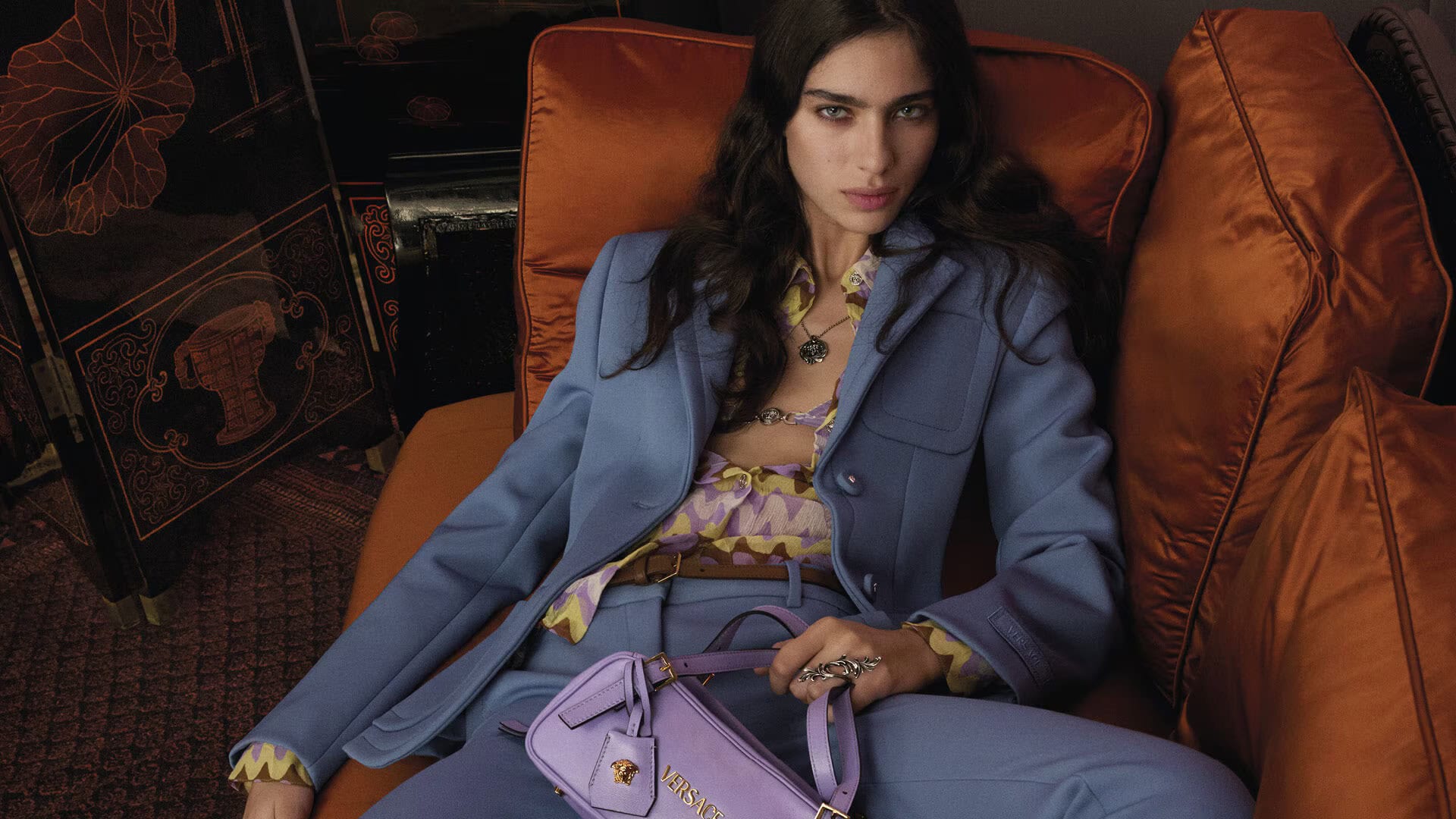Bloomingdale’s CEO on the Future of American Department Stores

About a year into his tenure as Bloomingdale’s chief executive, Olivier Bron knows what’s ailing American department stores: too much focus on financial returns, and not enough on shoppers.
“We’ve lost the element of inspiration over the last 30 years,” Bron told BoF in an interview at Bloomingdale’s corporate headquarters in Long Island City, New York. “With pressure from Wall Street, you lose your long-term mindset and then you’re not investing as much as you should in the store experience, in service nor in newness.”
An outsider to American fashion who has worked as an executive for Parisian department store Galeries Lafayette and Thai retail conglomerate Central Group, Bron believes the value of the format hasn’t changed since its invention 300 years ago — a sprawling space promising endless variety, with beautiful displays and persuasive salespeople.
What has changed is what counts as inspiration, he said. Simply displaying a mainstream offering of fashion isn’t enough. Discovery is about creating something new: bringing two brands together in collaboration, for instance, or an intricately themed event that people have never seen before.
Bron’s job now is to bring this purpose back to Bloomingdale’s, along with a sense of newness. Since taking over for Tony Spring, now the chief executive of Macy’s Inc., Bron has implemented his own growth strategy at Bloomingdale’s called Dream Big, focused on updating stores and customising them to their specific markets, as well as investing in vendor relationships. This means improved shop-in-shops, taking risks on smaller brands, hosting events alongside brand partners and facilitating unlikely collaborations, all of which will benefit both vendors and shoppers, Bron added.
It comes at an important time for the upscale department store chain, which is playing an outsize role in Spring’s turnaround strategy for the faltering Macy’s Inc. While the company does not break out sales for Bloomingdale’s nor Bluemercury, its beauty retailer, retail analyst Janet Kloppenburg estimates that Bloomingdale’s contributes to about 12 percent of Macy’s Inc.’s revenue, or nearly $3 billion in sales last year. But as Macy’s continues to close stores — from 650 locations pre-pandemic to 350 by 2026 — Bloomingdale’s will open 15 new locations in the coming years, either in a new smaller format or as outlets.
Bron’s timing is certainly apt. The luxury multi-brand market has seen major consolidation in recent months, including Saks Fifth Avenue’s merger with Neiman Marcus and Mytheresa’s acquisition of Yoox Net-a-Porter from Richemont. If he can pull off his planned refresh, Bloomingdale’s has the opportunity to stand out from the rest of the pack.
“Bloomingdale’s has a distinctly different image than other luxury competitors,” said Kloppenburg. “It’s fun, it’s accessible and it’s very New York-centric. When you go to Neiman Marcus, it’s not so fun. And that’s okay because they have Valentino and Prada but it’s not like they’re entertaining me or giving me an experience that is beyond shopping.”
A New Standard for Partnership
Bron’s strategy is rooted in winning back the favour of fashion brands that have grown wary of wholesale, as well as making changes that will resonate with Bloomingdale’s’ particular demographic. Its shoppers tend to be younger and prefer a less formal shopping experience — a largely different profile from customers who visit standalone brand boutiques.
Bron said he wants Bloomingdale’s to be a place where consumers are introduced to new brands, but also for it to continue to serve as a conduit between the two. For instance, over the summer, Bloomingdale’s co-hosted a Saint Laurent pop-up in the Hamptons, inviting 30 top clients to a personalised private shopping session of the brand’s recent and upcoming seasons.
“My obsession is how we become more and more relevant for our brands and how we can play a role in their retail strategy,” he said.
In-store activations will also play a major role, exemplified by the large-scale Italy-themed activation ongoing in its Manhattan flagship until the end of the month. Dubbed “From Italy With Love,” the campaign involves multiple concurrent in-store events, participation from more than 150 brand partners including Ferragamo and Bottega Veneta and an intensive store makeover with dozens — if not hundreds — of store displays (some in the shape of giant tomatoes and lemons).
The retailer will continue investing in brand-specific activations, as well as in bringing different partners together to create something new, like the tie-up between denim label Rag & Bone and Brooklyn pizza restaurant Lucali as part of From Italy With Love. The unlikely collaboration featured a co-branded merch capsule and a meatball-making class hosted by Lucali’s owner. Other examples include collaborations it facilitated between cookware brand Le Creuset and interior designer Sheila Bridges, and a collection between Off-White and football team AC Milano.

“What is inspiration?” said Bron. “It’s not necessarily bringing only what exists on the market, but creating newness on the market … and a point-of-view.”
Brand partners have already seen a difference.
“I recently met Olivier and was impressed by the breadth of his international experience as well as his vision for Bloomingdale’s,” Patrice Louvet, CEO of Ralph Lauren, told BoF in a statement. “I very much look forward to Olivier bringing international department store best practices to Bloomingdales and the broader Macy’s group.”
The Bloomies’ Experience
Bron also has big plans for the 57 existing Bloomingdale’s locations, taking a page out of his experience managing department stores in Asia and Europe: strong product assortment, great customer service and an emphasis on Bloomingdale’s own unique branding.

“It’s cosy to shop at Bloomingdale’s,” he said. “It’s not like other department stores, or brands’ boutiques. It’s less intimidating — casual.”
It’s a subtle differentiator — Bloomingdale’s informal vibe — but one that sets the retailer apart from its competitors as long as it continues to improve and innovate on the shopping experience.
“We don’t want to be the biggest department store chain in the US,” said Bron. “We want to be the local leader.” This means opting for a bottom-up approach in shaping the customer service and merchandising strategy for each of Bloomingdale’s stores.
In recent months, Bloomingdale’s has started making store improvements, from lighting upgrades and new furniture to renovating entire departments. Now, it’s looking to make major alterations in its 59th street Manhattan flagship, including expanding the luxury footprint, building new shop-in-shops and revamping its design shoe section.
It’s not a small undertaking; the project will take multiple years to complete. But Bron believes it will help set the chain up for success for years to come.
“It’s not just about products, but the joy and pleasure of shopping, from the façade and curbside of the building to all the small things inside the store,” said Bron. “It’s always a surprise to our customers, and that’s fantastic.”
Brian Baskin contributed to the reporting.
Related
Trudeau says Canada will issue 25% tariffs on $155B of…
'The Bottom Line' panelists Lee Carter and Liz Peek give their take on President Donald Trump confirming the 25% tariffs. Canadian Prime Minister Justin T
Cartel Violence Kills American Citizen In Brutal Fashion. Will Trump…
PublishedFebruary 25, 2025 4:34 PM EST|UpdatedFebruary 25, 2025 4:35 PM ESTFacebookTwitterEmailCopy LinkAn American citizen is dead after a cartel-linked bombin
Luxury Briefing: Tapestry, Capri and the American fashion portfolio shakeup
In this week’s Luxury Briefing: The fallout from the failed Tapestry-Capri merger continues, with Tapestry selling Stuart Weitzman and Capri reportedly eyeing
Liz Truss tells CPAC UK is ‘failing’ and needs Maga-style…
Liz Truss, the former British prime minister, told a rightwing conference in the US that her country was “failing” and needed a Donald Trump-style “Maga�













